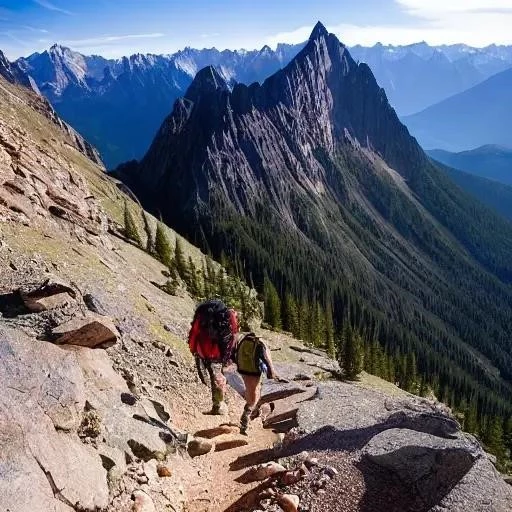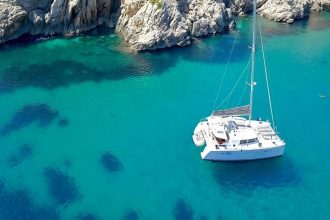Get ready to explore the majestic world of high-altitude hiking, where every step takes you closer to the sky! We’re diving into the challenges and triumphs of these incredible journeys, examining trails that push the limits of human endurance and reward with unparalleled vistas․ From the towering peaks of the Himalayas to the rugged Andes, these treks offer more than just physical exertion; they promise profound self-discovery and a deeper connection with nature’s raw power․ Join us as we uncover the secrets of conquering the world’s most elevated paths, preparing you for your next breathtaking adventure․
The quest for the “highest altitude” in hiking is a captivating pursuit, drawing adventurers globally to landscapes carved by glaciers and kissed by clouds․ Unlike mountaineering, which often demands technical climbing skills and extensive permits, high-altitude hiking typically refers to trails accessible to well-prepared trekkers, albeit still requiring significant physical and mental fortitude․ These journeys are not merely about reaching a summit; they are about immersing oneself in the sheer scale of the planet, witnessing untouched wilderness, and experiencing the profound silence of the upper world․ The allure lies in the challenge, the spectacular views, and the unique sense of accomplishment that comes from walking among giants․ This article will guide you through some of the most renowned and exhilarating high-altitude treks, offering insights into their unique characteristics and the preparation needed to undertake them successfully․
| Aspect of High-Altitude Hiking | Description & Key Considerations | Reference / Best Practice |
|---|---|---|
| Definition of High-Altitude Hiking | Trails accessible to trekkers without specialized technical climbing equipment (e․g․, ropes, advanced ice axes for vertical ascent), typically above 3,000 meters (10,000 feet) where altitude effects become significant․ | Focus on physical conditioning and acclimatization․ |
| Notable Highest Treks (Examples) | Mera Peak (Nepal ⎯ 6,476m), Aconcagua (Argentina ⎯ walk-up peak, requires permit, crampons), Kala Pattar (Nepal ⎯ Everest Group subsidiary, no permit for hike), Kanchenjunga Base Camp (Nepal/India ⎯ 8,586m peaks), Cotopaxi (Ecuador ─ highest active volcano)․ | Research specific trail requirements and conditions thoroughly․ |
| Key Challenges | Acute Mountain Sickness (AMS), extreme weather variability, demanding physical exertion, navigation in remote areas, proper gear selection․ | International Society for Mountain Medicine (ISMM) for altitude sickness information․ |
| Essential Preparation | Progressive physical training (cardio, strength), gradual acclimatization schedule, proper hydration, balanced nutrition, mental resilience․ | Consult a doctor experienced in travel medicine before departure․ |
| Crucial Gear | Layered clothing system, robust hiking boots, trekking poles, high-altitude sleeping bag, personal first-aid kit, sun protection (hat, sunglasses, sunscreen), water purification․ | Invest in quality gear suitable for extreme conditions․ |
| Environmental Impact & Ethics | Leave No Trace principles, respecting local cultures, supporting sustainable tourism, minimizing waste․ | Leave No Trace Center for Outdoor Ethics․ |
Among the pantheon of high-altitude destinations, Nepal’s Mera Peak stands out, proudly claiming its title as the highest trekking peak on the planet, soaring to an astonishing 6,476 meters․ This ascent, while challenging, is considered a “walk-up” for experienced trekkers, offering unparalleled panoramic views of five of the world’s six highest mountains, including Everest, Lhotse, Cho Oyu, Makalu, and Kanchenjunga․ The journey to Mera Peak is an odyssey through remote Sherpa villages, dense rhododendron forests, and ultimately, across sprawling glaciers, demanding robust physical fitness and meticulous acclimatization․ Similarly, the Kanchenjunga Trek, an epic 22-day adventure, leads to the base camps of the world’s third-highest mountain, immersing trekkers in a rich tapestry of biodiversity and cultural heritage at staggering elevations․
In South America, the allure of the Andes calls with equally formidable challenges and rewards․ Aconcagua, often described as the tallest mountain one can “walk up,” presents a monumental undertaking for aspiring high-altitude hikers․ While not requiring technical rock climbing, its colossal elevation of nearly 7,000 meters (22,838 feet) necessitates a climbing permit, specialized gear like crampons, and an unwavering commitment to a slow, deliberate acclimatization schedule․ Ecuador’s Cotopaxi, the highest active volcano globally, offers another compelling high-altitude climb, celebrated for its dramatic landscapes and the unique thrill of standing atop a living geological wonder․ These South American giants, with their vast open spaces and unpredictable weather, truly test the limits of human endurance, forging unforgettable experiences for those brave enough to attempt them․
Beyond these towering titans, other incredible high-altitude experiences beckon․ Kala Pattar, a subsidiary ridge of the Everest Group in Nepal, provides arguably the most iconic views of Mount Everest itself without requiring a climbing permit, making it a popular and incredibly effective destination for trekkers․ At 5,604 meters (18,386 feet), Chile’s Cerro Toco, an easy drive from the charming town of San Pedro de Atacama, offers a relatively accessible high-altitude experience, with the possibility of driving to approximately 17,000 feet, significantly shortening the arduous climb․ For those seeking sustained high-elevation trekking within the United States, the John Muir Trail, also known as Nüümü Poyo, traverses over 200 miles of California’s High Sierra, offering a prolonged immersion in stunning alpine environments․
The mental and physical preparation for such expeditions cannot be overstated․ By integrating insights from seasoned guides and medical professionals, trekkers can significantly mitigate the risks associated with high altitudes, primarily Acute Mountain Sickness (AMS)․ Gradual ascent, proper hydration, a balanced diet, and ample rest are cornerstones of a successful high-altitude strategy․ Moreover, the right gear—from layered clothing to robust footwear and reliable trekking poles—becomes an extension of the hiker’s will, ensuring comfort and safety in unforgiving conditions․ These journeys are transforming, pushing individuals beyond their perceived limitations and revealing an inner strength previously untapped․
As the world increasingly seeks connection with nature and profound personal challenges, high-altitude hiking is emerging as a pinnacle experience․ It’s an optimistic vision of human potential, demonstrating our capacity to adapt, endure, and thrive in some of Earth’s most formidable environments․ Standing on a windswept ridge, gazing across an endless sea of peaks, the trivialities of daily life fade, replaced by an overwhelming sense of awe and belonging․ These aren’t just trails; they are pathways to self-discovery, offering a unique perspective on our planet and our place within it․ So, lace up your boots, plan meticulously, and prepare to elevate your spirit on the world’s highest altitude hiking trails․ The mountains are calling, and a breathtaking adventure awaits․






